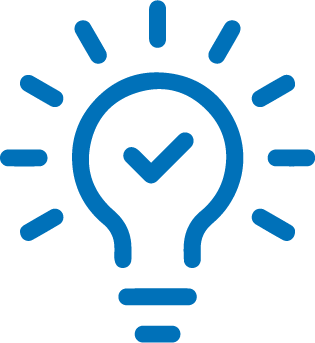Drafting
Learning Objectives
- Identify drafting strategies that improve writing.
- Use drafting strategies to prepare the first draft of an essay.
Drafting is the stage of the writing process in which you develop a complete first version of a piece of writing.
Even professional writers admit that an empty page scares them because they feel they need to come up with something fresh and original whenever they open a blank document on their computers. You have already recovered from empty page syndrome because you have completed the first two steps in the writing process. You have hours of prewriting and planning already done. You know what will go on that blank page: what you wrote in your outline.
Getting Started: Strategies For Drafting
Your objective for this portion of the chapter is to draft the body paragraphs of a standard five-paragraph essay. A five-paragraph essay contains an introduction, three body paragraphs, and a conclusion. If you are more comfortable starting on paper than on the computer, you can start on paper and type it before revising. You can also use a voice recorder to get yourself started, dictating a paragraph or two to get you thinking.
Making the Writing Process Work for You
The writing process is so beneficial to writers because it encourages alternatives to standard practices while motivating you to develop your best ideas. For instance, the following approaches, done alone or in combination with others, may improve your writing and help you move forward in the writing process:
Begin writing with the part you know the most about.
You can start with the third paragraph in your outline if ideas come easily to mind. You can start with the second paragraph or the first paragraph, too. Although paragraphs may vary in length, keep in mind that short paragraphs may contain insufficient support. Readers may also think the writing is abrupt. Long paragraphs may be wordy and may lose your reader’s interest. As a guideline, try to write paragraphs longer than one sentence but shorter than the length of an entire double-spaced page.
Write one paragraph at a time and then stop.
As long as you complete the assignment on time, you may choose how many paragraphs you complete in one sitting. Pace yourself. On the other hand, try not to procrastinate. Writers should always meet their deadlines.
Take short breaks to refresh your mind.
This tip might be most useful for writing a multipage report or essay. Still, if you are antsy or cannot concentrate, take a break to let your mind rest. But do not let breaks extend too long. If you spend too much time away from your essay, you may have trouble starting again. You may forget key points or lose momentum. Try setting an alarm to limit your break, and when the time is up, return to your desk to write.
Be reasonable with your goals.
If you decide to take ten-minute breaks, try to stick to that goal. If you told yourself that you need more facts, then commit to finding them. Holding yourself to your own goals will create successful writing assignments.
Keep your audience and purpose in mind as you write.
These aspects of writing are just as important when you are writing a single paragraph for your essay as when you are considering the direction of the entire essay.
Of all of these considerations, keeping your purpose and your audience at the front of your mind is the most important key to writing success. If your purpose is to persuade, for example, you will present your facts and details in the most logical and convincing way you can.
Your purpose will guide your mind as you compose your sentences. Your audience will guide word choice. Are you writing for experts, for a general audience, for other college students, or for people who know very little about your topic? Keep asking yourself what your readers, with their background and experience, need to be told in order to understand your ideas. How can you best express your ideas so they are totally clear and your communication is effective?
 Tip
Tip
 You may want to identify your purpose and audience on an index card that you clip to your paper (or keep next to your computer). On that card, you may want to write notes to yourself—perhaps about what that audience might not know or what it needs to know—so that you will be sure to address those issues when you write. It may be a good idea to also state exactly what you want to explain to that audience, or to inform them of, or to persuade them about.
You may want to identify your purpose and audience on an index card that you clip to your paper (or keep next to your computer). On that card, you may want to write notes to yourself—perhaps about what that audience might not know or what it needs to know—so that you will be sure to address those issues when you write. It may be a good idea to also state exactly what you want to explain to that audience, or to inform them of, or to persuade them about.
Connecting the Pieces: Writing at Work

Many of the documents you produce at work target a particular audience for a particular purpose. You may find that it is highly advantageous to know as much as you can about your target audience and to prepare your message to reach that audience, even if the audience is a coworker or your boss.
Menu language is a common example. Descriptions like “organic romaine” and “free-range chicken” are intended to appeal to a certain type of customer, though perhaps not to the same customer who craves a thick steak. Similarly, mail-order companies research the demographics of the people who buy their merchandise. Successful vendors customize product descriptions in catalogues to appeal to buyers’ tastes. For example, the product descriptions in a skateboarder catalogue will differ from those in a clothing catalogue for mature adults.
Exercises
Using the topic for an essay that you have outlined, describe your purpose and your audience as specifically as you can. Use your own sheet of paper to record your responses. Then, keep these responses near you during future stages of the writing process.
- My purpose: __________________________
- My audience: _________________________
Setting Goals for Your First Draft
A draft is a complete version of a piece of writing, but it is not the final version. The step in the writing process after drafting, as you may remember, is revising. During revising, you can make changes to your first draft before you put the finishing touches on it during the editing and proofreading stage. A first draft gives you a working version that you can later improve.
Connecting the Pieces: Writing at Work

Workplace writing in certain environments is done by teams of writers who collaborate on the planning, writing, and revising of documents, such as long reports, technical manuals, and the results of scientific research. Collaborators do not need to be in the same room, the same building, or even the same city. Many collaborations are conducted over the Internet.
In a perfect collaboration, each contributor has the right to add, edit, and delete text. Strong communication skills, in addition to strong writing skills, are important in this kind of writing situation because disagreements over style, content, process, emphasis, and other issues may arise.
The collaborative software, or document management systems, that groups use to work on common projects is sometimes called groupware or workgroup support systems.
The reviewing tool on some word-processing programs also gives you access to a collaborative tool that many smaller workgroups use when they exchange documents. You can also use it to leave comments to yourself.
 Tip
Tip
 If you invest some time now to investigate how the reviewing tool in your word processor works, you can use it confidently during the revision stage of the writing process.
If you invest some time now to investigate how the reviewing tool in your word processor works, you can use it confidently during the revision stage of the writing process.
Then, when you start to revise, set your reviewing tool to track any changes you make so you can tinker with the text and commit only those final changes you want to keep.
Discovering the Basic Elements of a First Draft
If you have been using the information in this chapter step by step to help you develop an assignment, you already have both a formal topic outline and a formal sentence outline to direct your writing. Knowing what a first draft looks like will help you creatively leap from the outline to the first draft. A first draft should include the following elements:
- An introduction that piques the audience’s interest tells what the essay is about and motivates readers to keep reading.
- A thesis statement that presents the main point, or controlling idea, of the entire piece of writing.
- A topic sentence in each paragraph that states the main idea of the paragraph and implies how that main idea connects to the thesis statement.
- Supporting sentences in each paragraph that develop or explain the topic sentence. These can be specific facts, examples, anecdotes, or other details that elaborate on the topic sentence.
- A conclusion that reinforces the thesis statement and leaves the audience with a feeling of completion.
- “Drafting” by Andrew M. Stracuzzi and Andre Cormier, is available in Putting the Pieces Together, CC BY-NC-SA 4.0.

